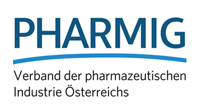A weakening of protective rights for new drugs threatens the cornerstones of drug research and endangers the development of medical innovations.
Anyone who conducts research wants to protect their invention from imitation, at least for a certain period of time. If this drive disappears or becomes unattractive, the world of research will look elsewhere. As a result, Europe is losing important know-how and high-quality jobs and can then only hope that the innovations that are developed elsewhere will also be available here at some point.
Mag. Alexander Herzog, Secretary General of PHARMIG
Vienna (OTS) – Today’s World IP Day focuses on protecting intellectual property. This is a key driving force in research. A protection period of 20 years currently applies across the EU for drug development. Whether this will remain is currently being discussed as part of the revision of the EU pharmaceutical legislation. Against the background that the EU is simultaneously struggling for its position in the global context, Alexander Herzog, Secretary General of PHARMIG, says: “Anyone who conducts research wants to protect their invention from imitation, at least for a certain period of time. If this drive disappears or becomes unattractive, the world of research will look elsewhere. This means that Europe is losing important know-how and high-quality jobs and can then only hope that the innovations that are being developed elsewhere will also be available here at some point.”
The applicable protection periods are not only an important point of EU pharmaceutical legislation. Relaxing patent protection is also being discussed in the development of the WHO pandemic treaty. However, a different approach was taken when it came to COVID-19 vaccines and therapeutics: Here too, there was talk of suspending patent protection, but this was ultimately not decided. “This was a clear signal to the world that strong intellectual property protection drives innovation. Such signals are all the more important when it is pointed out by everyone that Europe is constantly losing importance compared to other regions, especially the USA and China,” said Herzog.
In drug development, a patent is usually registered right at the beginning of a research project, even if it is not yet foreseeable whether the new active ingredient will actually come onto the market as a new drug. This only becomes apparent after many years of intensive work and takes an average of twelve years. This reduces the effective patent protection to eight years, which the company has left to earn back the high investments. “Interfering with this proven system is delicate and could make the development of new drugs more difficult,” Herzog is convinced.
Another advantage of lively research activity is the early access to the newly developed drugs for patients. On the one hand, you can take part in the clinical studies here and the products are usually introduced first in the countries in which they were developed. “It’s not just the patients who benefit, but also the skilled workers market, the job market and thus the entire economy,” says Herzog.
About PHARMIG: PHARMIG is the voluntary interest group of the Austrian pharmaceutical industry. The association currently has around 120 members (as of April 2024), who cover a good 95 percent of the medication market. PHARMIG and its member companies stand for the best possible security of supply of medicines in the healthcare system and ensure social and medical progress through quality and innovation.
Questions & Contact:
PHARMIG – Association of the Austrian Pharmaceutical Industry
Peter Richter, BA MA MBA
Head of Communications & PR
+43 664 8860 5264
peter.richter@pharmig.at
www.pharmig.at
